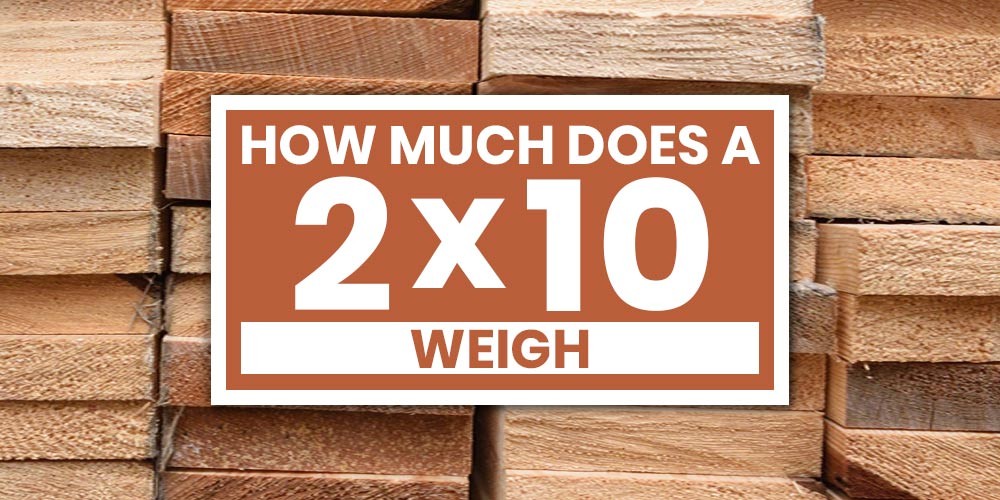How much does a 2×4 weigh is a common question for builders and DIY enthusiasts alike. Determining the precise weight of lumber is crucial for project planning and ensuring safe transportation. HOW.EDU.VN offers expert insights to simplify your building process.
1. Understanding the Weight of a 2×4: Key Factors
The weight of a 2×4 isn’t a fixed number. Several factors influence its final mass, including the wood species, moisture content, and whether it’s been treated. Let’s break down these variables to give you a clearer understanding.
1.1. The Impact of Wood Species on 2×4 Weight
Different tree species have varying densities, directly affecting the weight of the lumber produced. For example, Southern Yellow Pine is known for its hardness and density, making it heavier than lighter woods like Spruce or Fir. Choosing the right wood for your project is about more than just aesthetics; it’s also about understanding the weight implications. The selection of wood type impacts the structural integrity and handling considerations, making it a crucial decision point early in the planning phase.
1.2. Treated vs. Untreated Lumber: A Weighty Difference
Treated lumber undergoes a process where it’s soaked in liquid preservatives to protect against water damage and pests. This treatment significantly increases the moisture content of the wood, sometimes up to 75%. Consequently, treated lumber is noticeably heavier than its untreated counterpart. This difference is crucial to consider when estimating material weights for your project. Knowing the treatment status of your lumber is essential for accurate weight calculations and for ensuring the proper handling and support during construction.
1.3. Moisture Content’s Role in 2×4 Weight
Moisture content is a key determinant of lumber weight. Untreated lumber comes in two primary forms: green and kiln-dried. Green lumber is freshly cut and hasn’t undergone any drying process, retaining a high moisture level. Kiln-dried lumber, on the other hand, is heated in a kiln to evaporate moisture, making it significantly lighter. The choice between green and kiln-dried lumber affects not only the weight but also the wood’s stability and suitability for different applications. Understanding the moisture content is crucial for predicting how the wood will behave over time, especially in terms of shrinking or warping.
1.4. Length Matters: How 2×4 Length Affects Weight
The length of a 2×4 is a straightforward factor affecting its overall weight. However, it’s essential to consider this in conjunction with the other variables mentioned above. Calculating weight per foot provides the most reliable method for estimating the total weight of a 2×4, regardless of its length. Combining the weight-per-foot measurement with the total length allows for accurate predictions, crucial for both material planning and structural calculations.
2. Calculating 2×4 Weight: A Step-by-Step Guide
To accurately determine how much a 2×4 weighs, follow these steps:
- Identify the Wood Species: Determine the type of wood your 2×4 is made from.
- Check for Treatment: Is the lumber treated or untreated?
- Consider Moisture Content: Is it green or kiln-dried?
- Measure the Length: Determine the exact length of the 2×4.
- Calculate Weight Per Foot: Use the table below as a reference.
- Multiply: Multiply the weight per foot by the total length to get the estimated weight.
3. Detailed 2×4 Weight Chart by Species and Length
| Wood Type | Treatment | Weight per Foot (lbs) | 8 ft (lbs) | 10 ft (lbs) | 12 ft (lbs) | 16 ft (lbs) |
|---|---|---|---|---|---|---|
| Ponderosa Pine | Treated | 1.47 | 11.76 | 14.70 | 17.64 | 23.52 |
| Ponderosa Pine | Untreated | 1.02 | 8.16 | 10.20 | 12.24 | 16.32 |
| Douglas Fir | Treated | 1.77 | 14.16 | 17.70 | 21.24 | 28.32 |
| Douglas Fir | Untreated | 1.24 | 9.92 | 12.40 | 14.88 | 19.84 |
| Western Hemlock | Treated | 1.64 | 13.12 | 16.40 | 19.68 | 26.24 |
| Western Hemlock | Untreated | 1.06 | 8.48 | 10.60 | 12.72 | 16.96 |
| Southern Yellow Pine | Treated | 2.10 | 16.80 | 21.00 | 25.20 | 33.60 |
| Southern Yellow Pine | Untreated | 1.49 | 11.92 | 14.90 | 17.88 | 23.84 |








Note: These are average weights. Actual weights may vary.
4. The Weight of a 2x4x8: Specific Examples
Understanding the weight of a standard 2x4x8 is essential for many construction projects. Here’s a breakdown based on different wood species:
4.1. Weight of a Ponderosa Pine 2x4x8
Ponderosa Pine, when untreated, weighs approximately 1.02 lbs per foot. Therefore, a 2x4x8 made of Ponderosa Pine will weigh around 8.2 lbs. This makes it one of the lighter options available, suitable for projects where weight is a concern.
4.2. Weight of a Douglas Fir 2x4x8
Douglas Fir is a popular choice for construction due to its stiffness and strength. With an untreated weight of 1.24 lbs per foot, a 2x4x8 of Douglas Fir will weigh approximately 9.9 lbs.
4.3. Weight of a Western Hemlock 2x4x8
Western Hemlock is often sold under the generic label HEM-FIR. An untreated 2x4x8 of Western Hemlock weighs about 8.5 lbs, with a weight of 1.06 lbs per foot.
4.4. Weight of a Southern Yellow Pine 2x4x8
Southern Yellow Pine is one of the densest softwoods available, making it a robust choice for construction. An untreated 2x4x8 board weighs 11.9 lbs, or 1.49 lbs per foot.
5. The Weight of a 2x4x10: Detailed Analysis
Understanding the weight variations in different wood types is crucial for project planning. This section delves into the specific weights of 2x4x10 lumber made from different species, providing a clearer picture for your material choices.
5.1. Weight of a Ponderosa Pine 2x4x10
Ponderosa Pine is known for its relatively lightweight nature and wide availability across western North America. A 2x4x10 board made of untreated Ponderosa Pine typically weighs around 10.2 lbs. This makes it a practical choice for projects where minimizing weight is a key consideration.
5.2. Weight of a Douglas Fir 2x4x10
Douglas Fir is a common and moderately priced option for construction. An untreated 2x4x10 made of Douglas Fir usually weighs about 12.4 lbs. However, it’s worth noting that reclaimed or old-growth boards of Douglas Fir can be considerably more expensive, making it a factor to consider in budgeting.
5.3. Weight of a Western Hemlock 2x4x10
Western Hemlock, often classified as a domestic softwood, is frequently used for framing and general construction purposes. An untreated 2x4x10 of Western Hemlock weighs approximately 10.6 lbs. Its moderate price point and workability make it a versatile choice for various building needs.
5.4. Weight of a Southern Yellow Pine 2x4x10
Southern Yellow Pine is characterized by its density, uneven grain, and distinct transition between earlywood and latewood. This makes it a robust material for construction. An untreated 2x4x10 board of Southern Yellow Pine weighs around 14.9 lbs. Its substantial weight reflects its strength, making it suitable for projects requiring solid structural support.
6. The Weight of a 2x4x12: Species Comparison
Here’s a breakdown of the approximate weight calculations for 2x4x12 boards made from different tree species commonly used for commercial wood:
6.1. Weight of a Ponderosa Pine 2x4x12
Despite being classified as a yellow or hard pine, Ponderosa Pine is significantly less dense than Southern Yellow Pine. An untreated 2x4x12 typically weighs around 12.2 lbs.
6.2. Weight of a Douglas Fir 2x4x12
Douglas Fir trees grow to a considerable size, yielding a large amount of lumber, which makes them highly valuable for commercial timber. An untreated 2x4x12 board weighs approximately 14.9 lbs.
6.3. Weight of a Western Hemlock 2x4x12
An untreated Western Hemlock 2x4x12 weighs about 12.7 lbs. While generally workable, the difference between soft earlywood and late hardwood can lead to uneven surfaces in boards.
6.4. Weight of a Southern Yellow Pine 2x4x12
Although there are four species of Southern Yellow Pine, they are nearly indistinguishable, even under microscopic examination. A typical untreated 2x4x12 board weighs 17.9 lbs.
7. The Weight of a 2x4x16: Untreated vs. Treated Considerations
When determining the weight of a 2x4x16 board, it’s essential to consider whether the wood is treated or untreated. While the following calculations use the untreated weight per foot, some species, such as Douglas Fir and Southern Yellow Pine, are more commonly used or more beneficial as treated 2x4s.
7.1. Weight of a Ponderosa Pine 2x4x16
The International Union for Conservation of Nature (IUCN) classifies Ponderosa Pine as a species of least concern, making these 2x4s a sustainable choice for construction. An untreated 2x4x16 board weighs approximately 16.3 lbs.
7.2. Weight of a Douglas Fir 2x4x16
An untreated Douglas Fir board measuring 2x4x16 will weigh around 19.8 lbs. It’s worth noting that while this wood typically machines well, it has a moderate tendency to blunt blades.
7.3. Weight of a Western Hemlock 2x4x16
An untreated 2x4x16 weighs approximately 17.0 lbs. However, it’s important to note that this wood is susceptible to insect attacks, which can be prevented through pressure treatment.
7.4. Weight of a Southern Yellow Pine 2x4x16
An untreated Southern Yellow Pine 2x4x16 weighs around 23.8 lbs. However, this wood is a preferred species for pressure treatment, comprising 85% of the treated wood in the United States.
8. Determining Truck Capacity for 2x4s: A Practical Guide
If you’re transporting 2x4s, knowing the total weight is critical for determining the right cargo size for your truck bed. An excessively heavy load can damage your vehicle, while an insufficiently light load results in unnecessary trips. Below are the lumber calculations for a few common pickup truck models.
8.1. Ford F-150 Pickup Truck Capacity
A standard model Ford F-150 can carry up to 1,300 lbs of cargo in the bed. The total amount of lumber you can transport will depend on the length of your 2x4s. However, using an average board weight of 9 lbs, your truck can handle approximately 144 boards.
8.2. Dodge Ram 1500 Pickup Capacity
The Dodge Ram 1500 pickup bed can handle 1,240 lbs. The required board length may vary depending on your project, but with a typical 2x4x8 weighing 9 lbs each, you can carry about 137 boards in the bed.
8.3. Chevy Silverado 1500 Pickup Truck Capacity
The Chevy Silverado 1500 has the highest weight-bearing capacity of the three standard trucks calculated here. The bed can handle 1,650 lbs of cargo, making it the best model for projects that require a large amount of lumber. Based on an average of 9 lbs per 2×4, the Silverado can handle approximately 183 boards.
9. Leveraging Expertise: Why Consult with Professionals?
While understanding the factors that influence 2×4 weight and performing calculations can be helpful, construction projects often present unique challenges. Consulting with experienced professionals can provide invaluable insights and ensure accuracy in material estimation and structural planning.
9.1. The Benefits of Professional Consultation
Engaging with experts offers several advantages:
- Accurate Material Estimation: Professionals can accurately estimate the required quantity of 2x4s, minimizing waste and cost overruns.
- Informed Decision-Making: Expert advice can guide you in selecting the most suitable wood species and treatment options based on your project’s specific needs and environmental conditions.
- Structural Integrity: Professionals can assess load-bearing requirements and provide recommendations to ensure the structural integrity of your project.
- Safety Assurance: Expert consultations help identify potential safety hazards related to material handling and construction techniques.
9.2. HOW.EDU.VN: Your Partner in Construction Success
HOW.EDU.VN connects you with a network of over 100 distinguished PhDs and experts ready to provide tailored advice for your construction projects. Whether you’re tackling a DIY home renovation or managing a large-scale building endeavor, our experts offer the guidance you need to succeed.
Our specialists bring a wealth of knowledge across various construction domains, including:
- Material Selection: Choosing the right type of lumber for your specific needs.
- Structural Design: Ensuring your project meets all safety and regulatory standards.
- Load Calculation: Accurately calculating load-bearing requirements for structural integrity.
By partnering with HOW.EDU.VN, you gain access to expertise that ensures your project is completed efficiently, safely, and to the highest standards.
10. Addressing Common Concerns: FAQs About 2×4 Weight
Here are some frequently asked questions about the weight of 2x4s:
- What is the average weight of a 2×4?
- The average weight of a 2x4x8 is about 9 lbs, but this varies based on wood species, treatment, and moisture content.
- How does treated lumber’s weight compare to untreated lumber?
- Treated lumber is heavier due to the added preservatives and moisture content.
- Does the length of a 2×4 significantly affect its weight?
- Yes, the longer the 2×4, the heavier it will be. Weight is directly proportional to length.
- What is the lightest type of wood for a 2×4?
- Ponderosa Pine is one of the lightest options.
- How does moisture content affect the weight of a 2×4?
- Higher moisture content increases the weight. Green lumber is heavier than kiln-dried lumber.
- Can I accurately estimate the weight of a 2×4 without knowing the species?
- It’s difficult to be precise without knowing the species, but you can use an average weight as an estimate.
- Why is it important to know the weight of 2x4s for construction?
- Knowing the weight is important for transportation, structural calculations, and ensuring you don’t overload your vehicle.
- How can I find out if my lumber is treated?
- Treated lumber is usually marked with a stamp indicating the type of treatment.
- Are the weight differences between wood species significant enough to impact construction plans?
- Yes, especially for large projects where weight can accumulate and affect load-bearing requirements.
- Where can I get expert advice on selecting the right lumber for my project?
- HOW.EDU.VN connects you with over 100 PhDs and experts who can provide tailored advice.
Conclusion: Mastering 2×4 Weight for Project Success
Understanding how much does a 2×4 weigh involves considering various factors such as wood species, treatment, moisture content, and length. By using the information and resources provided in this guide, you can more accurately estimate the weight of your lumber and plan your construction projects effectively.
For personalized advice and expert guidance, connect with the PhDs at HOW.EDU.VN today. Benefit from the knowledge of over 100 specialists who can help you make informed decisions, ensure project success, and tackle even the most complex challenges with confidence. Contact us at 456 Expertise Plaza, Consult City, CA 90210, United States or via WhatsApp at +1 (310) 555-1212. Visit our website at HOW.EDU.VN to learn more.
Don’t leave your project to chance. Reach out to how.edu.vn today and experience the difference expert consultation can make.
